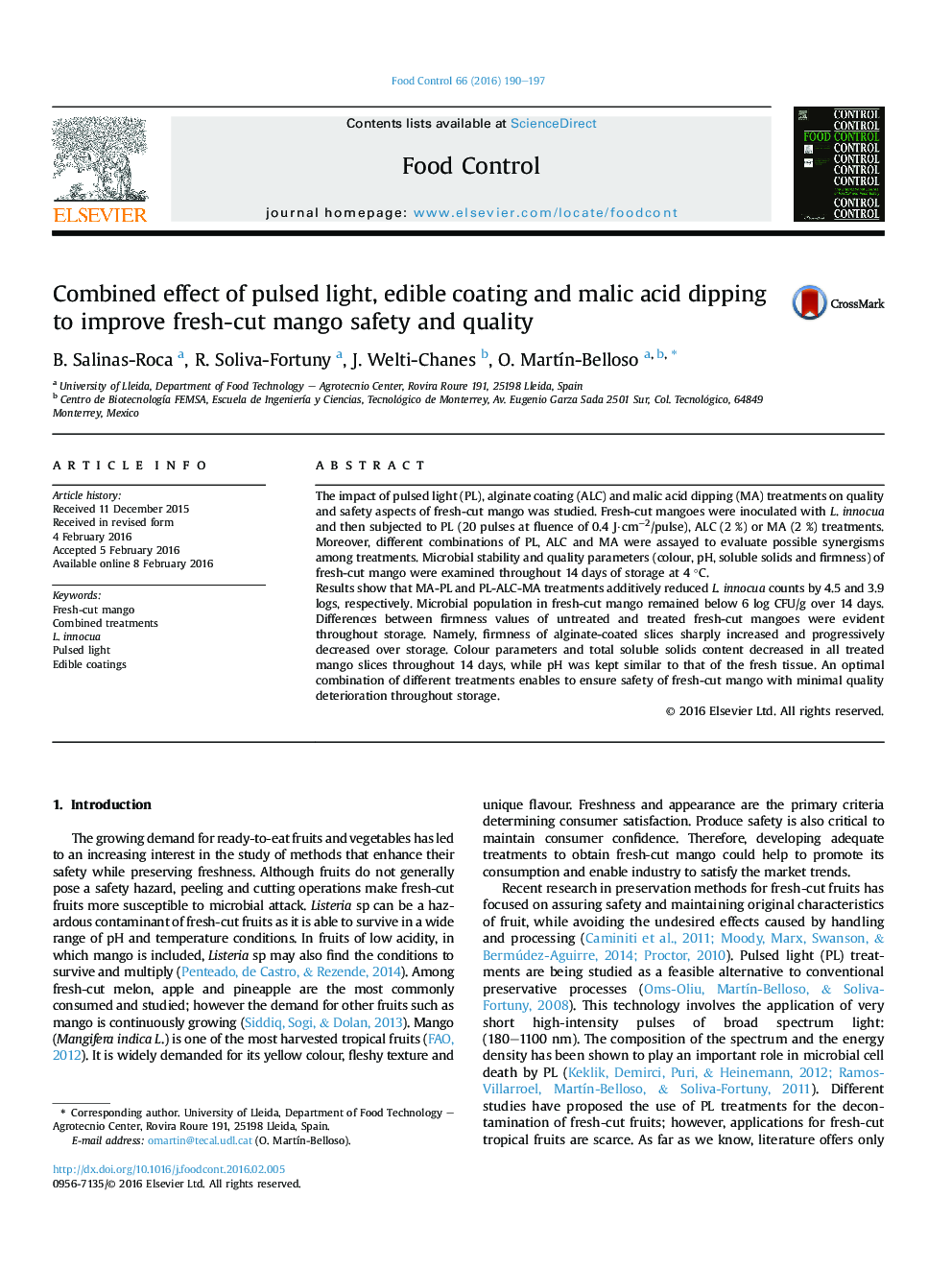| Article ID | Journal | Published Year | Pages | File Type |
|---|---|---|---|---|
| 4559191 | Food Control | 2016 | 8 Pages |
•Broad spectrum pulsed light treatment reduced Listeria innocua population in fresh-cut mango.•Pulsed light combined with edible coating and malic acid had an additive effect on microbial reduction in fresh-cut mango.•Combined treatments maintained physical attributes of fresh-cut mango throughout storage.•Pulsed light as a first hurdle in combination with the other treatments enhanced quality of fresh-cut mango for 14 days.
The impact of pulsed light (PL), alginate coating (ALC) and malic acid dipping (MA) treatments on quality and safety aspects of fresh-cut mango was studied. Fresh-cut mangoes were inoculated with L. innocua and then subjected to PL (20 pulses at fluence of 0.4 J·cm−2/pulse), ALC (2 %) or MA (2 %) treatments. Moreover, different combinations of PL, ALC and MA were assayed to evaluate possible synergisms among treatments. Microbial stability and quality parameters (colour, pH, soluble solids and firmness) of fresh-cut mango were examined throughout 14 days of storage at 4 °C.Results show that MA-PL and PL-ALC-MA treatments additively reduced L. innocua counts by 4.5 and 3.9 logs, respectively. Microbial population in fresh-cut mango remained below 6 log CFU/g over 14 days. Differences between firmness values of untreated and treated fresh-cut mangoes were evident throughout storage. Namely, firmness of alginate-coated slices sharply increased and progressively decreased over storage. Colour parameters and total soluble solids content decreased in all treated mango slices throughout 14 days, while pH was kept similar to that of the fresh tissue. An optimal combination of different treatments enables to ensure safety of fresh-cut mango with minimal quality deterioration throughout storage.
